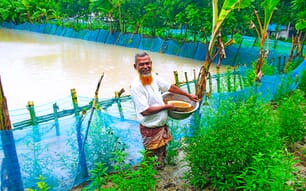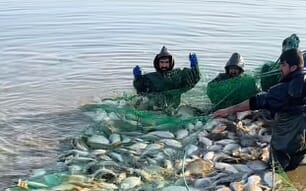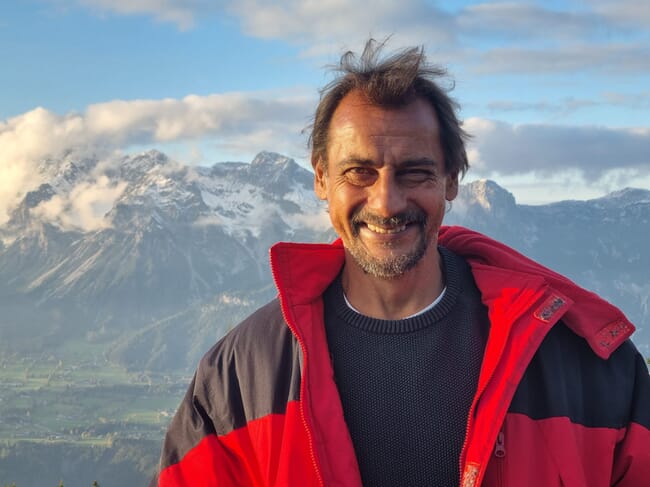
Here he is standing above the White Panther hatchery in the Austrian Alps © Philip Buike
Can you tell me a bit about White Panther and what inspired them to establish Europe’s first shrimp hatchery?
White Panther is a visionary company and from the outset, Stefan Weiser – who was CEO at the time – considered a hatchery as an integral part of the whole production process. He realised that the provision of a reliable source of disease-free larvae would be critical to ensure the long-term success of the operation.
What’s been own your role in establishing the hatchery?
Transferring a design – a building full of tanks, tubes, valves and machines that go ping – into something that works. In other words implementing a system that takes a fixed set of inputs through a specific and reliable process (SOP set) and deliver a product at a total cost that is commercially viable. Put like this it all sounds very basic but – as in all things – the reality was somewhat more complicated. Without the incredible dedication of the team as a whole, this would not have been achieved.
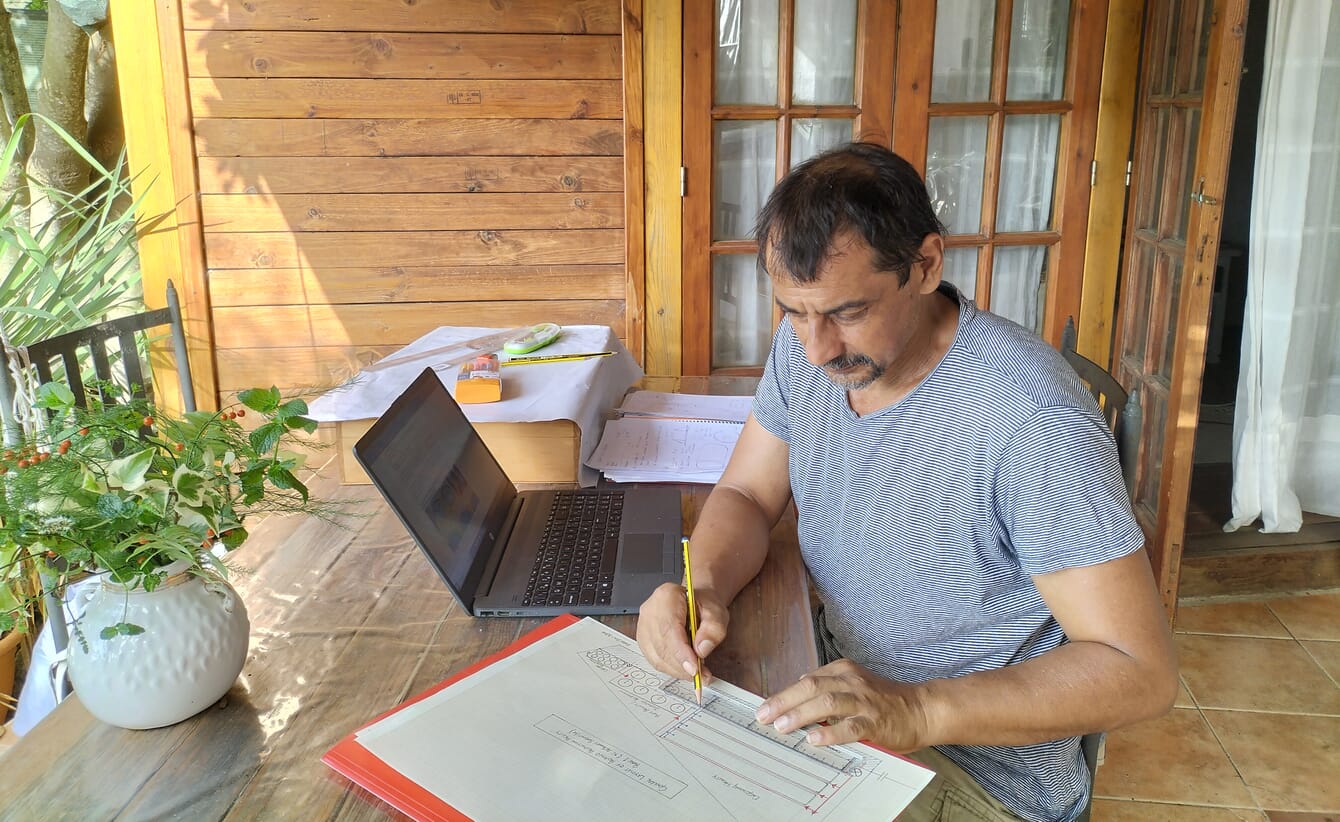
© Philip Buike
What are the main challenges of setting up shrimp hatcheries in temperate regions?
The challenges facing a potential inland shrimp hatchery are significant: the most important is complete effluent control or assimilation of all environmental costs. As a consequence of the requirement to reduce saline discharge to zero (in most cases), water has to be re-used as much as possible, which means that RAS is really the only option available.
It is true that in some Asiatic countries a “green water” approach has been used, and though deceptively simple (just reproduce the natural ecosystem of the shrimp larvae) in practise it is very difficult to obtain consistent results.
Meanwhile biofloc doesn’t work for early developmental stages either because, amongst other issues, the flocs trap larval shrimp just as effectively as they trap protozoa.
Other challenges are mainly related to cost, such as the need for total climate control, the need for large quantities of sea salt mix and the local labour rates. Production scale is also a big factor, very small hatcheries (less than 1 million PLs per month) suffer from disproportionately high labour and maturation costs and – currently – possibilities for amortisation by increasing production capacity are limited, due to the limited demand. In short, if you don’t have a significant domestic demand, access to cheap energy and a means of completely recycling any effluent produced, you will have an uphill battle.
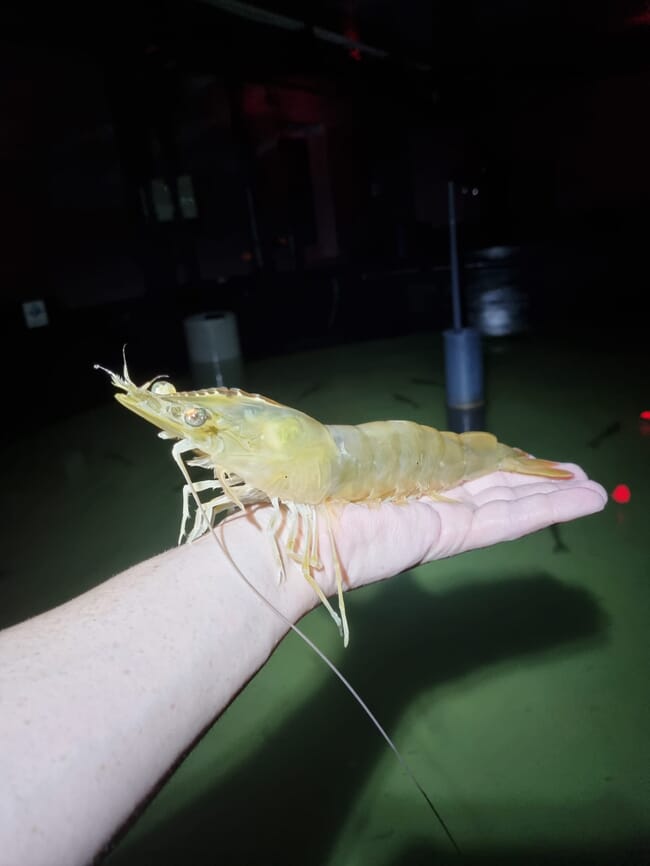
© Philip Buike
Are there any advantages of setting up shrimp hatcheries in these regions?
I’m not entirely sure right now if there are any advantages over imported larvae in purely economic terms. However, if the industry continues along its current trajectory then I think things like production autonomy, maintenance of disease-free status, opportunity to develop specific domestic strains and probable scale savings in larvae cost, will all become significant reasons to develop the hatchery side of the business.
The larger operations (those investing several tens of millions of euros) do not want to be reliant on third parties for the provision of the major input component – larvae – but want to be able to control this themselves.
What are the next shrimp hatchery projects that you’re working on?
I can’t say much, because the projects I am currently involved with are all in fairly early stages of development, but there appears to be interest across the length and breadth of Europe – from the extreme north to the Greek islands and from Spain to the former Soviet states. Eastern Europe seems particularly promising, due to access to very cheap energy (mainly geothermal) subterranean salt water and relatively low labour costs.
An increase of European-produced larvae will make it easier for smaller ongrowing operations to enter the market.
Do you think that farming shrimp in RAS could avoid some of the pitfalls experienced by the salmon RAS pioneers?
It’s been many years since I was last in a salmon farm and things appear to have moved on significantly since then. But the margins are probably still too tight and salmon RAS OPEX too high for them to be profitable.
Operational stability is another question and I'm sure that brains way bigger than mine will eventually get to the bottom of this. Undoubtedly Atlantic Sapphire looms large in the mind of many potential investors, but that’s probably a good thing, as it incentivises the industry to make sure they have got it right before going public.
Shrimp, on the other hand, enjoy two big advantages: a very fast turnover (as little as 40 days with a multi-phase systems) and a huge scope for genetic improvement, that’s yet to be exploited. I can see, one day, that northern Europe will have a cold water, pelagic, omnivorous shrimp strain – the expertise and technology is already here, its just a matter of time.
Whatever happens, I think that low or no discharge systems will become the norm in all branches of aquaculture, at least within the EU, and shrimp will be no exception. The other possibility is that it becomes clear that established shrimp producing nations just have too many natural advantages to allow temperate production to be viable. I truly hope this does not turn out to be the case, but it wouldn’t the first time that an introduced species has failed to take hold.
What have been the highlights of your career so far?
I don´t know how important my highlights have been, its probably the lowlights that have been more valuable in the long run. Killing all the shrimp during a harvest, not designing a pump station with sufficient capacity, neglecting to do a soil test, leaving a good job to go to a bad job, these things (and many more) are what I don`t forget and vow not to repeat.
In terms of highlights, I suppose the first was being accepted to study at Stirling University, prior to this I had no idea just how diverse and important aquaculture is. The next was deciding to leave the UK to get a job (I took Norman Tebbit's advice): Ecuador – not academic studies or business plan fantasies – was, and still is, where real aquaculture takes place. I took over a derelict shrimp farm on the outskirts of Guayaquil at the tender age of 26 and put it on a profitable basis within a year.
Having David Griffith as my boss was another highlight. Most people in the shrimp business in the Americas will have known or heard of David – who was a giant in every sense of the word and went on to work at Sea Farms in the US, and then as manager of Naqua, in Saudi Arabia. Sadly he died too young, but I was lucky enough to have him as close friend, and he taught me everything from how to operate an excavator to how to handle the board of directors.
More recently, at White Panther, after a lot of hard work with a team of highly motivated people (particularly Michael Kolmar, the hatchery manager), we finally managed to achieve stable production of shrimp post-larvae on a commercial scale, using artificial seawater, thousands of kilometres from the sea.
Every day I feel honoured that the companies for whom I provide technical advice, trust my experience and knowledge to help them move forward with a shared vision of domestically produced shrimp here in Europe.
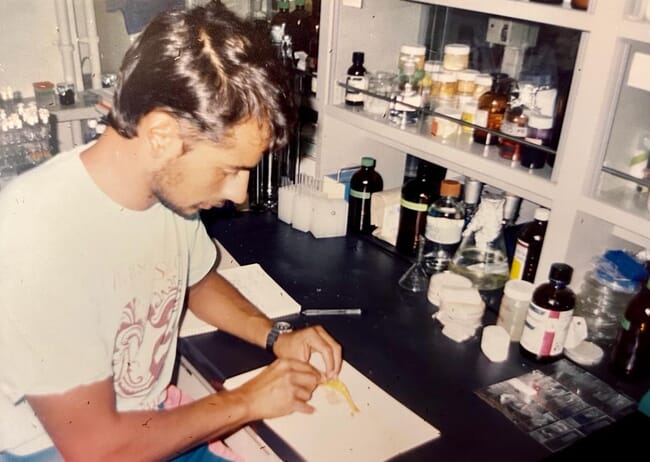
© Philp Buike
What inspired you to pursue a career in aquaculture?
I grew up in a fishing village in North Yorkshire and nearly ended up being a boat builder if it were not for my mother, who insisted that I studied and went to university (the first ever in my family), in Plymouth, to study fisheries science. It was here, in the early 1980s, that I learnt about aquaculture and the idea of being able to provide the world with a reliable and affordable source of protein really appealed to my idealistic young mind.
My first job in the industry was on a trout farm in southern England, where my days consisted of throwing food into ponds and then cleaning the screens. After a couple of years I moved to Scotland and worked on one of the first land-based salmon farms, on the island of Kerrera. It was owned by Lord Lovatt, and drew water from one side of the island, through a series of raceways, before it was discharged on the other side of the island.
I was put in charge of the system, but soon realised I lacked the technical knowledge. Fortunately, I was awarded a grant to do a masters degree at Stirling. This really opened me up to the wider world of aquaculture and, on graduating, I went to work on a shrimp farm in Ecuador. I really loved my work, it being outdoors but mentally stimulating. And, most of all, it was real – I was producing food and getting paid for how well I could do it.
What are your own ambitions in the coming years?
I still see the same people in the shrimp industry as I did 40 years ago – at some point a new generation has to take over. Maybe shrimp farming is like some strange addiction, you just can’t let it go. That’s what I love about my job, there are always new challenges, new ways of looking at things and new opportunities. I will never regret getting the plane from Lisbon to Caracas (there were no direct flights to Ecuador at that time) nearly four decades ago.


